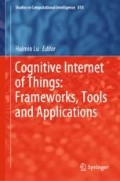Abstract
In this paper, we present a novel framework to incorporate top-down guidance to identify salient objects. The salient regions/objects are predicted by transferring objectness prior without the requirement of center-biased assumption. The proposed framework consists of the following two basic steps: In the top-down process, we create a location saliency map (LSM), which can be identified by a set of overlapping windows likely to cover salient objects. The corresponding binary segmentation masks of training windows are treated as high-level knowledge to be transferred to the test image windows, which may share visual similarity with training windows. In the bottom-up process, a multi-layer segmentation framework is employed, providing local shape information that is used to delineate accurate object boundaries. Through integrating top-down objectness priors and bottom-up image representation, our approach is able to produce an accurate pixel-wise saliency map. Extensive experiments show that our approach achieves the state-of-the-art results over MSRA 1000 dataset.
Access this chapter
Tax calculation will be finalised at checkout
Purchases are for personal use only
References
Borji, A., Tavakoli, H.R., Sihite, D.N., Itti, L.: Analysis of scores, datasets, and models in visual saliency prediction. In: CVPR, pp. 921–928 (2013)
Itti, L., Koch, C., Niebur, E.: A model of saliency-based visual attention for rapid scene analysis. TPAMI 20(11), 1254–1259 (1998)
Jiang, H., Wang, J., Yuan, Z., Wu, Y., Zheng, N., Li, S.: Salient object detection: a discriminative regional feature integration approach. In: CVPR, pp. 2083–2090 (2013)
Li, X., Lu, H., Zhang, L., Ruan, X., Yang, M.H.: Saliency detection via dense and sparse reconstruction. In: ICCV (2013)
Marchesotti, L., Cifarelli, C., Csurka, G.: A framework for visual saliency detection with applications to image thumbnailing. In: ICCV, pp. 2232–2239 (2009)
Yan, Q., Xu, L., Shi, J., Jia, J.: Hierarchical saliency detection. In: CVPR, pp. 1155–1162 (2013)
Yang, C., Zhang, L., Lu, H., Ruan, X., Yang, M.H.: Saliency detection via graph-based manifold ranking. In: CVPR, pp. 3166–3173 (2013)
Zhao, R., Ouyang, W., Wang, X.: Person re-identification by salience matching. In: ICCV, pp. 73–80 (2013)
Alexe, B., Deselaers, T., Ferrari, V.: What is an object? In: CVPR. pp. 73–80 (2010)
Gao, D., Han, S., Vasconcelos, N.: Discriminant saliency, the detection of suspicious coincidences, and applications to visual recognition. TPAMI 31(6), 989–1005 (2009)
Toshev, A., Shi, J., Daniilidis, K.: Image matching via saliency region correspondences. In: CVPR, pp. 1–8 (2007)
Jung, C., Kim, C.: A unified spectral-domain approach for saliency detection and its application to automatic object segmentation. TIP 21(3), 1272–1283 (2012)
Mahadevan, V., Vasconcelos, N.: Saliency-based discriminant tracking. In: CVPR, pp. 1007–1013 (2009)
Goferman, S., Zelnik-Manor, L., Tal, A.: Context-aware saliency detection. In: CVPR, pp. 2376–2383 (2010)
Liu, T., Yuan, Z., Sun, J., Wang, J., Zheng, N., Tang, X., Shum, H.: Learning to detect a salient object. TPAMI 33(2), 353–367 (2011)
Tatler, B.: The central fixation bias in scene viewing: selecting an optimal viewing position independently of motor biases and image feature distributions. J. Vision 7(14), 1–17 (2007)
Shen, X., Wu, Y.: A unified approach to salient object detection via low rank matrix recovery. In: CVPR, pp. 853–860 (2012)
Borji, A., Sihite, D.N., Itti, L.: Salient object detection: A benchmark. In: ECCV, pp. 414–429 (2012)
Wei, Y., Wen, F., Zhu, W., Sun, J.: Geodesic saliency using background priors. In: ECCV (2012)
Judd, T., Ehinger, K., Durand, F., Torralba, A.: Learning to predict where humans look. In: ICCV, pp. 2106–2113 (2009)
Achanta, R., Shaji, A., Smith, K., Lucchi, A., Fua, P., Süsstrunk, S.: SLIC superpixels. EPEL, Tech. Rep 149300 (2010)
Kuettel, D., Ferrari, V.: Figure-ground segmentation by transferring window masks. In: CVPR, pp. 558–565 (2012)
Achanta, R., Estrada, F., Wils, P., Susstrunk, S.: Salient region detection and segmentation. Comput. Vision Syst. 66–75 (2008)
Achanta, R., Hemami, S., Estrada, F., Susstrunk, S.: Frequency-tuned salient region detection. In: CVPR, pp. 1597–1604 (2009)
Cheng, M., Zhang, G., Mitra, N., Huang, X., Hu, S.: Global contrast based salient region detection. In: CVPR, pp. 409–416 (2011)
Hou, X., Zhang, L.: Saliency detection: a spectral residual approach. In: CVPR, pp. 1–8 (2007)
Harel, J., Koch, C., Perona, P.: Graph-based visual saliency. In: NIPS, pp. 545–552 (2006)
Perazzi, F., Krahenbuhl, P., Pritch, Y., Hornung, A.: Saliency filters: Contrast based filtering for salient region detection. In: CVPR, pp. 733–740 (2012)
Zhai, Y., Shah, M.: Visual attention detection in video sequences using spatiotemporal cues. In: ACMMM, pp. 815–824 (2006)
Oliva, A., Torralba, A.: Modeling the shape of the scene: a holistic representation of the spatial envelope. IJCV 42(3), 145–175 (2001)
Wang, J., Lu, H., Li, X., Tong, N., Liu, W.: Saliency detection via background and foreground seed selection. Neurocomputing 152, 359–368 (2015)
Zhou, Q.: Object-based attention: saliency detection using contrast via background prototypes. EL 50(14), 997–999 (2014)
Comaniciu, D., Meer, P.: Mean shift: a robust approach toward feature space analysis. TPAMI 24(5), 603–619 (2002)
Shi, J., Malik, J.: Normalized cuts and image segmentation. TPAMI 22(8), 888–905 (2000)
Everingham, M., Zisserman, A., Williams, C.K.I., Van Gool, L.: The PASCAL visual object classes challenge 2006 (VOC2006) results. http://www.pascal-network.org/challenges/VOC/voc2006/results.pdf
Acknowledgements
This work was partly supported by the National Natural Science Foundation of China (Grant No. 61876093, 61881240048, 61571240, 61501247, 61501259, 61671253, 61762021), Natural Science Foundation of Jiangsu Province (Grant No. BK20181393, BK20150849, BK20160908), Huawei Innovation Research Program (HIRP2018), and Natural Science Foundation of Guizhou Province (Grant No. [2017]1130).
Author information
Authors and Affiliations
Corresponding author
Editor information
Editors and Affiliations
Rights and permissions
Copyright information
© 2020 Springer Nature Switzerland AG
About this chapter
Cite this chapter
Zhou, Q., Fan, Y., Ou, W., Lu, H. (2020). Saliency Detection via Objectness Transferring. In: Lu, H. (eds) Cognitive Internet of Things: Frameworks, Tools and Applications. ISAIR 2018. Studies in Computational Intelligence, vol 810. Springer, Cham. https://doi.org/10.1007/978-3-030-04946-1_20
Download citation
DOI: https://doi.org/10.1007/978-3-030-04946-1_20
Published:
Publisher Name: Springer, Cham
Print ISBN: 978-3-030-04945-4
Online ISBN: 978-3-030-04946-1
eBook Packages: Intelligent Technologies and RoboticsIntelligent Technologies and Robotics (R0)

